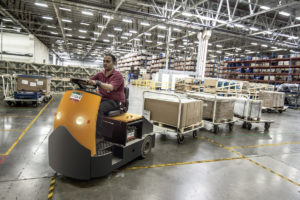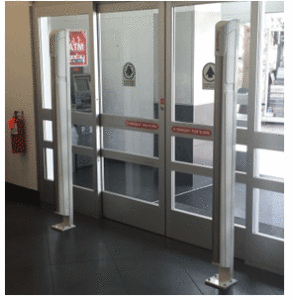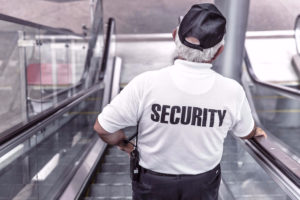 A Target or Walmart store can and are able to fight shoplifting in their stores every day of the year. The expense associated with shoplifting has for many years been known to be passed down to the consumer, and the increase in prices has been an expense that gradually has affected consumers around the globe.
A Target or Walmart store can and are able to fight shoplifting in their stores every day of the year. The expense associated with shoplifting has for many years been known to be passed down to the consumer, and the increase in prices has been an expense that gradually has affected consumers around the globe.
In the United States retail shrink which includes shoplifting, employee theft, administrative errors and vendor fraud cost the US retailers close to $50 billion in 2016 alone. More than 36% of shrink was due to shoplifting, and 30% was due to employee theft.
Many local businesses across the United States have taken different approaches to prevent shoplifting. From investing in Facial recognition software to shoplifting prevention training, many businesses have taken different approaches to the prevention of this crime. But, according to the National Retail Federation (NRF) even as the average inventory shrink rate has increased by close to 1.5% the budgets for loss prevention personnel has decreased or remained flat.
What are some of the steps local businesses have taken to prevent shoplifting?
Signage – A Spokane Washington local business has signage that lets you know from the time you enter their store that they have Video surveillance in use and they will prosecute you in case of shoplifting, and they also have a policy of taking your name when you enter their fitting rooms. If you shoplift, they already have your name.
Customer Service -has been proven to be one of the major loss prevention strategies businesses have adopted that can also benefit them in the long run. Be aware of the difference between offering great customer service and stalking a customer.
Training – Trained personnel cannot only help you prevent shoplifting but can prevent incidents from getting out of hand. Knowing the laws, regulation, and the process when a shoplifting incident occurs can save lives and prevent lawsuits.
Facial recognition software – If you are using facial recognition software in your stores, caution has to be taken into consideration. Using facial recognition improperly can lead to too many problems and too few rewards. Properly trained personnel are one important aspect of using this kind of security measure.
There is probably a fine line between great customer service and making your customer feel like a criminal. Losing customers because your employees follow them and are constantly asking them if they need help or making them uncomfortable is not a good solution. If you are also targeting people for no apparent reason, the probability that the bad experience will find an outlet that will carry bad publicity for your business is very likely.
Let us know if some of the above methods you are using seem to be working for you.
 Some of the most stolen items in stores in the United States are not surprising. From Infant formula to razors, people are stealing these items to sell them for quick cash or because they are shoplifters that are dedicated to doing this crime. Valentine’s Day is approaching, and some of the items that seem to be gifted during this day are among the most commonly stolen items in the United States. A shoplifter will steal any time of the year, whether the opportunity presents itself or not, or whether it’s a holiday or a weekday. As a store manager or employee of a store, greeting and treating a customer politely can gain you a customer, and deter a shoplifter from stealing from your store. Customer service has been proven time and again to be a great deterrent to shoplifters, and cannot hurt to be polite and competent with your regular customers.
Some of the most stolen items in stores in the United States are not surprising. From Infant formula to razors, people are stealing these items to sell them for quick cash or because they are shoplifters that are dedicated to doing this crime. Valentine’s Day is approaching, and some of the items that seem to be gifted during this day are among the most commonly stolen items in the United States. A shoplifter will steal any time of the year, whether the opportunity presents itself or not, or whether it’s a holiday or a weekday. As a store manager or employee of a store, greeting and treating a customer politely can gain you a customer, and deter a shoplifter from stealing from your store. Customer service has been proven time and again to be a great deterrent to shoplifters, and cannot hurt to be polite and competent with your regular customers. I actually like and believe in all three of these things. When it comes to drugs they have to be the legal kind. All of us have seen the destruction that illegally used drugs cause. In a business environment, illegal drug use by an employee not only has an impact on their work performance but creates serious customer and legal issues for employers. An employee that is under the influence of any substance that influences their ability to do their job correctly or safely, will cause customers to question who they are doing business with.
I actually like and believe in all three of these things. When it comes to drugs they have to be the legal kind. All of us have seen the destruction that illegally used drugs cause. In a business environment, illegal drug use by an employee not only has an impact on their work performance but creates serious customer and legal issues for employers. An employee that is under the influence of any substance that influences their ability to do their job correctly or safely, will cause customers to question who they are doing business with. Hopefully, your store is one of those places where employees look forward to coming to work. You know what I’m talking about it’s that environment where everyone is happy to be there. Employees know they are there to get a job done and take pride in the service they offer to the customers. It’s the type of job where people may have an off day but their co-workers are supportive and help pick them up. It happens to all of us. These jobs have a manager who interacts with the employees and takes a real interest in each of them. The boss may take time to say hello and greet everyone. They know their employees by name and may even know their families. Unfortunately, not every workplace has such a camaraderie amongst the team members. There is any number of reasons this can happen but a major contributor to an unhappy workplace can be the hiring of an employee with a poor attitude.
Hopefully, your store is one of those places where employees look forward to coming to work. You know what I’m talking about it’s that environment where everyone is happy to be there. Employees know they are there to get a job done and take pride in the service they offer to the customers. It’s the type of job where people may have an off day but their co-workers are supportive and help pick them up. It happens to all of us. These jobs have a manager who interacts with the employees and takes a real interest in each of them. The boss may take time to say hello and greet everyone. They know their employees by name and may even know their families. Unfortunately, not every workplace has such a camaraderie amongst the team members. There is any number of reasons this can happen but a major contributor to an unhappy workplace can be the hiring of an employee with a poor attitude. C
C After the holidays, you probably have a whole array of chores you must do to decide whether you had a good or bad year. The holidays are behind us, and if you seem eager to have new strategies to put in place, it is not uncommon, and you are not alone. New year resolutions are abundant during this time of year, and even though many of them are related to exercise, eating and health issues, yours can be directed completely to the business side of your life.
After the holidays, you probably have a whole array of chores you must do to decide whether you had a good or bad year. The holidays are behind us, and if you seem eager to have new strategies to put in place, it is not uncommon, and you are not alone. New year resolutions are abundant during this time of year, and even though many of them are related to exercise, eating and health issues, yours can be directed completely to the business side of your life. With darker daylight hours comes the need for more coffee, the use of lights earlier and a plan to keep crime away from your store or business. Have you considered that one of the following types of crime could affect you?
With darker daylight hours comes the need for more coffee, the use of lights earlier and a plan to keep crime away from your store or business. Have you considered that one of the following types of crime could affect you?
 Accidents can be costly to businesses. In fact, according to the
Accidents can be costly to businesses. In fact, according to the
 For many big retailers and the small mom and pop shop, the holidays are something to be excited about.
For many big retailers and the small mom and pop shop, the holidays are something to be excited about.